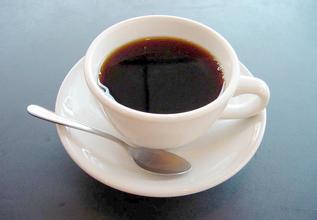Fragrant and delicious introduction to the planting Environment of Coffee varieties in Tianyi Manor, Nicaragua
Nicaragua coffee is one of the best in the world. It is mild and delicious, medium-sized and very aromatic. In many countries coffee production has been severely affected for political reasons. The coffee industry in Nicaragua is no exception. The revolution of 1979 forced coffee growers to flee to Miami. A period of uncertainty ensued as the Government considered whether to reallocate land, including many plantations, resulting in a shortage of coffee supplies and a decline in production from more than 1 million bags in the early 1970s to less than 600,000 bags in 1990. Now that the government has liberalized the coffee industry, private owners control the market. The best Nicaragua coffee is grown in the north and centre of the country, with the best coffee grown in Jinotega, Matagalpa and Nuevo Segovia. The best Nicaragua coffee falls into the category of Central Estrictamendte Altura coffee, which is very pleasant with moderate acidity and aroma. Poor quality coffee beans are widely used to blend coffee
Lake Nicaragua is the largest lake in Central America and is located in the southwest of Nicaragua. Native Indians call it Lake Cosivolca, which means "fresh water sea." Lake Nicaragua is 160 km long, 60 km wide on average and covers an area of 8264 km2. Tens of thousands of years ago, Lake Nicaragua was a bay in the Pacific Ocean, isolated from the sea by volcanic eruptions. With the passage of the sun and the moon, the lake water gradually diluted and became a fresh water lake. Fish living in the lake have adapted to the desalination and survived. At the beginning of the 21st century, there are still thousands of sharks, swordfish and sea carp in the lake. It is said that Lake Nicaragua is the only freshwater lake in the world where saltwater fish breed and inhabit.
At the beginning of the 21st century, the Pacific Ocean was connected to Lake Nicaragua by a 19-kilometre isthmus, in which water depths varied from 23 to 70 metres. The lake flows through the San Juan River into the Caribbean Sea. The Tipitapa River is connected to Lake Managua in the northwest.
Nicaragua lake has more than 300 islands, the smallest is only a few hundred square meters, the largest island is the island of Ometpe, 26 kilometers long, 13 kilometers wide, an area of more than 300 square kilometers, the island has two volcanic cones, one of which is 1610 meters high, there are many Mayan cultural relics on the island.
Water birds gather on the lake, and the lake is rich in all kinds of saltwater fish, including crocodiles, sharks, sea turtles, etc. Sharks swim to the lake along the San Juan River from the Caribbean Sea, so swimming is prohibited in Nicaragua Lake.
Watching large and small groups of turtles climb the reef to bask in the sun is a scene by the lake. Nicaragua lakeshore tree-lined, many red-topped pavilions dotted with blue water, lake wind blowing, water birds flying, fish jumping out of the water from time to time, that blue sky, white clouds, water light, lake color constitute a charming scenery. At the beginning of the 21st century, the beautiful Lake Nicaragua and Masaya Volcano have become the two famous landscapes of Nicaragua.
Great Wall of Nicaragua
The Great Wall of Nicaragua is located 150 kilometers west of Managua, the capital of Nicaragua. It was originally a boundary marker between Indian tribes. It also has certain defense functions, with a total length of 40 kilometers

Important Notice :
前街咖啡 FrontStreet Coffee has moved to new addredd:
FrontStreet Coffee Address: 315,Donghua East Road,GuangZhou
Tel:020 38364473
- Prev

Introduction to the planting environment of coffee flavor varieties in Mercedes Manor
Salvadoran coffee ranks side by side with Mexico and Guatemala as the producers of Asa and Merdo, and is fighting for the top one or two places in China and the United States with other countries. The highlands of origin are large coffee beans of all sizes, which are fragrant and mild in taste. Like Guatemala and Costa Rica, coffee in El Salvador is graded according to altitude, and the higher the altitude, the better the coffee
- Next

Introduction to the types of Coffee varieties grown in Coffee Farm in Ethiopia-Flavor description
Ethiopia has the world's most diverse coffee planting system and a complex ancient gene pool, coupled with multiple treatments of sun, water and semi-washing, showing a complex and changeable flavor. It can be said that the taste spectrum of coffee producing areas around the world can be drunk here, reflecting Ethiopia's eclectic king flavor. Peter Giu, the promoter of the third wave of boutique coffee
Related
- Does Rose Summer choose Blue, Green or Red? Detailed explanation of Rose Summer Coffee plots and Classification in Panamanian Jade Manor
- What is the difference between the origin, producing area, processing plant, cooperative and manor of coffee beans?
- How fine does the espresso powder fit? how to grind the espresso?
- Sca coffee roasting degree color card coffee roasting degree 8 roasting color values what do you mean?
- The practice of lattes: how to make lattes at home
- Introduction to Indonesian Fine Coffee beans-- Java Coffee producing area of Indonesian Arabica Coffee
- How much will the flavor of light and medium roasted rose summer be expressed? What baking level is rose summer suitable for?
- Introduction to the characteristics of washing, sun-drying or wet-planing coffee commonly used in Mantenin, Indonesia
- Price characteristics of Arabica Coffee Bean Starbucks introduction to Manning Coffee Bean Taste producing area Variety Manor
- What is the authentic Yega flavor? What are the flavor characteristics of the really excellent Yejasuffi coffee beans?

